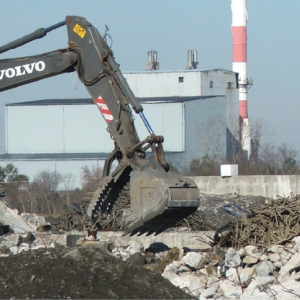
Why Environmental Remediation Matters in Industrial Settings
Industrial processes often result in the release of hazardous substances into the soil, groundwater, or atmosphere. Left unchecked, these pollutants can cause long-term damage to ecosystems and public health. Implementing remediation strategies during site development, operations, or post-closure phases is vital for:
- Meeting environmental compliance standards
- Minimizing health risks to workers and nearby communities
- Facilitating site reuse and economic redevelopment
Key Stages of Environmental Remediation
1. Site Assessment and Contamination Identification
A successful remediation project starts with a comprehensive Environmental Site Assessment (ESA). This phase involves:
- Soil testing to identify levels of heavy metals, hydrocarbons, or solvents
- Groundwater monitoring to detect contamination spread
- Air quality assessments for volatile organic compounds (VOCs)
Working alongside environmental scientists, civil engineers analyze contamination data to design effective cleanup strategies.
2. Common Remediation Technologies and Techniques
Depending on the nature and extent of the pollution, different remediation methods are applied:
- Excavation and Off-Site Disposal: Removing contaminated soil for treatment or secure disposal.
- In-Situ Treatment: On-site solutions such as:
- Bioremediation – using microorganisms to degrade organic contaminants
- Chemical Oxidation – injecting reagents to neutralize hazardous compounds
- Phytoremediation – planting vegetation to absorb or stabilize pollutants
- Pump and Treat: Extracting and treating contaminated groundwater.
- Capping and Containment: Using physical barriers like liners or clay caps to isolate contaminants when removal is not feasible.
3. Monitoring and Verification
Long-term monitoring ensures that the remediation system performs as intended. Civil engineers design monitoring programs including:
- Well sampling for groundwater quality tracking
- Periodic soil tests to check for residual contamination
- Air quality monitoring for emissions from remediated sites
Data collected is used to verify regulatory compliance and determine the site’s readiness for reuse.
4. Post-Remediation: Site Restoration and Reuse
Once a site is deemed safe, it can be repurposed for industrial, commercial, residential, or even green space use. Environmental remediation enhances land value, reduces liability, and supports sustainable redevelopment.
The Role of Civil Engineers in Sustainable Remediation
Civil Engineers bring technical leadership to environmental remediation by:
- Designing cost-effective, regulatory-compliant remediation plans
- Coordinating with environmental agencies and stakeholders
- Implementing innovative, sustainable technologies to minimize environmental impact
Their work ensures that industrial projects support both economic growth and environmental protection.
Importance of Environmental Remediation
Environmental remediation is not just a regulatory necessity—it’s a cornerstone of sustainable industrial development. Civil engineers drive these efforts, turning contaminated sites into assets that benefit businesses, communities, and the planet. As industries face growing pressure to meet ESG goals, the importance of effective remediation will continue to rise.
Ready to Tackle Your Site’s Environmental Challenges?
Partner with GEL Engineering for expert remediation and industrial project support. Our multi-disciplined team of engineers, geologists, environmental scientists, and field specialists delivers comprehensive solutions, including site assessment, remediation design, permitting, industrial hygiene, and long-term compliance monitoring.
Get results with specialized services including:
- Brownfields & Phase II site assessments
- Soil, groundwater, and vapor sampling
- In-situ remediation and containment
- Industrial hygiene, permitting, and compliance assistance
Request a Proposal
GEL can design a tailored remediation strategy for your site.
Contact GEL Engineering to get started.
